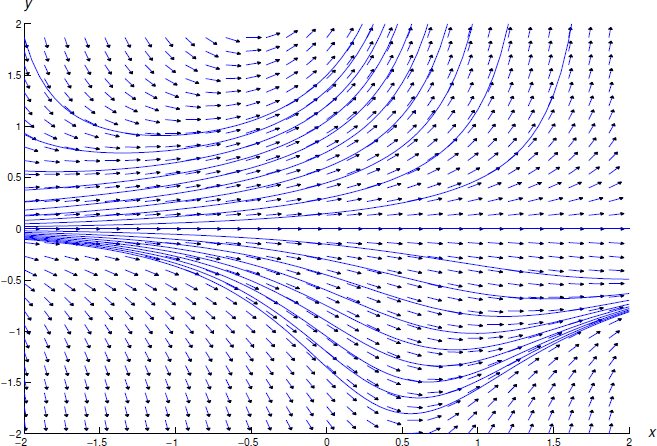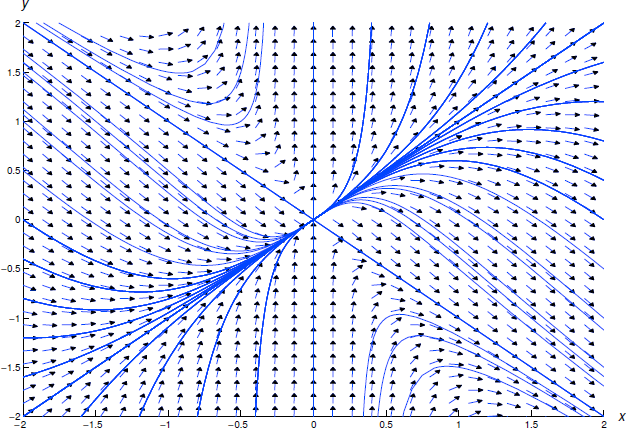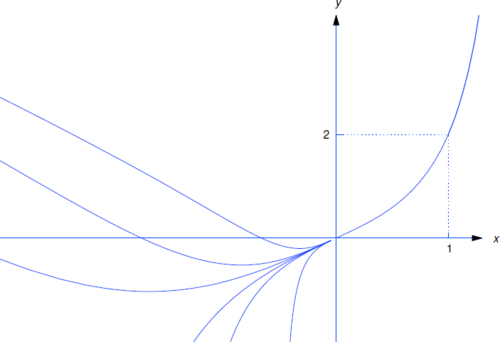2.4: Transformation of Nonlinear Equations into Separable Equations
( \newcommand{\kernel}{\mathrm{null}\,}\)
In Section 2.1, we found that the solutions of a linear nonhomogeneous equation
are of the form
and
Note that this last equation is separable, since it can be rewritten as
In this section we’ll consider nonlinear differential equations that are not separable to begin with, but can be solved in a similar fashion by writing their solutions in the form
Bernoulli Equations
A Bernoulli equation is an equation of the form
where
which is equivalent to the separable equation
since
Example
Solve the Bernoulli equation
Since
Separating variables yields
and integrating yields
Hence,
and
Figure

Other Nonlinear Equations That Can be Transformed Into Separable Equations
We’ve seen that the nonlinear Bernoulli equation can be transformed into a separable equation by the substitution
to be transformable into a separable equation in the same way. Substituting
which is equivalent to
If
for some function
which is separable. After checking for constant solutions
Homogeneous Nonlinear Equations
In the text we will consider only the most widely studied class of equations for which the method of the preceding paragraph works. Other types of equations appear in Exercises
The differential equation Equation
where
and
are of the form Equation
respectively. The general method discussed above can be applied to Equation
and separation of variables (after checking for constant solutions
Before turning to examples, we point out something that you may’ve have already noticed: the definition of homogeneous equation given here is not the same as the definition given in Section 2.1, where we said that a linear equation of the form
is homogeneous. We make no apology for this inconsistency, since we didn’t create it historically, homogeneous has been used in these two inconsistent ways. The one having to do with linear equations is the most important. This is the only section of the book where the meaning defined here will apply.
Since
Example
Solve
Substituting
Simplifying and separating variables yields
Integrating yields
Figure

Example
a. Solve
b. Solve the initial value problem
Solution a
We first find solutions of Equation
for
so
By inspection this equation has the constant solutions
or, after a partial fraction expansion,
Multiplying by 2 and integrating yields
or
which holds if
where

Therefore
is a solution of Equation
The situation is more complicated if
is a solution of Equation
We leave it to you to verify this. To do so, note that if
Figure
Solution b
We could obtain
The interval of validity of this solution is
is a solution of Equation
Figure

In the last two examples we were able to solve the given equations explicitly. However, this is not always possible, as you’ll see in the exercises.


